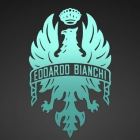Hi,
We are working on Audio I/O adapter for the internal project which is essentially a very small barebone XMOS development board many people asked for in this forum.
In it's current shape (schematic complete) - it is a stripped down version of xCORE-200 multichannel audio platform/HXRA hybrid:
- XU208-256 processor;
- Same 8x8 I/O channel count as in xCore-200 ( actual performance is bitrate/configuration dependent);
- I/O is terminated at two 34pin 100mil headers (clocks, data, control and 3.3V). No DAC/ADC on board;
- USB bus powered, (robust USB B connector);
- Coaxial In/Out;
- JTAG connector.
- One GPIO LED.
- No dimensions yet but probably 100x100 mm (-ish).
If there is an interest, we can make a small batch for 'X-men' community. No confirmed cost at this point but aim to keep it at 95 quid or less. Documentation, schematic and source code included.
Thoughts? Wish lists? Nothing is set in stone yet, but obviously I would prefer not to deviate significantly from the above specs.
Regards,
Alex
Small barebone XU2xx Development Board - POLL
-
vveasel
- Junior Member
- Posts: 5
- Joined: Mon Jan 02, 2017 8:56 am
-
ahenshaw

- Experienced Member
- Posts: 96
- Joined: Mon Mar 22, 2010 8:55 pm
I'm interested, but that cost is steep for my (low volume) application.
-
vveasel
- Junior Member
- Posts: 5
- Joined: Mon Jan 02, 2017 8:56 am
Can you quantify volume and target cost? Features you do not need?
-
ahenshaw

- Experienced Member
- Posts: 96
- Joined: Mon Mar 22, 2010 8:55 pm
I'm just interested in a replacement for the startKit for personal projects, so probably not your target audience. I just need lots of I/O and the ability to use this on a protoboard. I have a specific application that the startKit currently satisfies, but the chance for destruction is rather high, so I'd like to keep the cost down.
-
mon2

- XCore Legend
- Posts: 1913
- Joined: Thu Jun 10, 2010 11:43 am
@ahenshaw,
1) which target CPU?
2) the 64 pin TQFP package could be supplied in PDIP format @ 0.1" (2.54mm) spacing but larger devices will demand a breakout board with dual in line pins (could still be 0.1" spacing).
3) with XTAG header for your debugging and programming of each PCB? That is, the PCB should be stand alone and require only power?
4) which clocks are desirable? Our idea is to apply an onboard PLL that can be changed by simple I2C routines to suit. The CPU will be fixed clocked but an onboard PLL is a nice to have feature.
5) onboard USB support?
1) which target CPU?
2) the 64 pin TQFP package could be supplied in PDIP format @ 0.1" (2.54mm) spacing but larger devices will demand a breakout board with dual in line pins (could still be 0.1" spacing).
3) with XTAG header for your debugging and programming of each PCB? That is, the PCB should be stand alone and require only power?
4) which clocks are desirable? Our idea is to apply an onboard PLL that can be changed by simple I2C routines to suit. The CPU will be fixed clocked but an onboard PLL is a nice to have feature.
5) onboard USB support?
-
akp

- XCore Expert
- Posts: 580
- Joined: Thu Nov 26, 2015 11:47 pm
If I could chime in, I'd be interested in XE216-512 with at least TQ128. These would be for development boards prior to doing our custom layouts.
USB microusb (e.g.) on board with option for USB bus power or self power (e.g. 3.3V - 5.5V) input. XTAG on board would be nice. I'm not sure what you can do for PLL but I'd like to be able to generate audio mclks from (say) 4.096 MHz to 24.576 MHz. The CS2100-CP like on the MC audio board is probably too expensive for your other customers. Some kind of a replacement for the X200 slicekit or explorerKIT. We actually have a ton of sliceCARDs hanging about that I would just hard wire to the thing. Leave the breakout pins unsoldered so people can solder them on if they want (or not). A reasonably beefy 3.3V LDO would be good to power other peripherals, specifically thinking audio codec and/or Ethernet PHY.
I could get by with XU216 but have a specific project in mind for XE216. I would want 512k of SRAM for all the projects I can think of that are of interest (we have a load of XS1 slicekits so going from 128k to 256k doesn't offer enough benefit I don't think). There's a possibility we could do XU216 with USB bus power in low volume applications but couldn't promise it. I am thinking probably a half dozen boards for development if the price is something your other customers can stomach.
USB microusb (e.g.) on board with option for USB bus power or self power (e.g. 3.3V - 5.5V) input. XTAG on board would be nice. I'm not sure what you can do for PLL but I'd like to be able to generate audio mclks from (say) 4.096 MHz to 24.576 MHz. The CS2100-CP like on the MC audio board is probably too expensive for your other customers. Some kind of a replacement for the X200 slicekit or explorerKIT. We actually have a ton of sliceCARDs hanging about that I would just hard wire to the thing. Leave the breakout pins unsoldered so people can solder them on if they want (or not). A reasonably beefy 3.3V LDO would be good to power other peripherals, specifically thinking audio codec and/or Ethernet PHY.
I could get by with XU216 but have a specific project in mind for XE216. I would want 512k of SRAM for all the projects I can think of that are of interest (we have a load of XS1 slicekits so going from 128k to 256k doesn't offer enough benefit I don't think). There's a possibility we could do XU216 with USB bus power in low volume applications but couldn't promise it. I am thinking probably a half dozen boards for development if the price is something your other customers can stomach.
-
ahenshaw

- Experienced Member
- Posts: 96
- Joined: Mon Mar 22, 2010 8:55 pm
I was hoping for (at least) the XU216 with TQ128. For my purposes, USB B would be best, but micro would be okay. If there is a way to avoid the giant XTAG header (as the startKit does) then I'd like that. As I've mentioned in another thread, I simply want a Blue Pill for XMOS.
-
mon2

- XCore Legend
- Posts: 1913
- Joined: Thu Jun 10, 2010 11:43 am
Feedback is noted with thanks.
On USB, thinking USB Type C connector with a supplied Type A to Type C cable.
One version with Ethernet PHY and another without.
Attempting to offer onboard XTAG3 but to be determined as their is the associated cost for the XU208 CPU. Solution to have onboard ESD protection for the USB interface which is missing from the XTAG3.
Idea is to keep the costs down low and the development costs are quite high for even these simple breakout boards. Need to review the investment vs. rather low demand but wish to be fair to both sides yet affordable. Will raise the effort with XMOS who we hope will support this movement of alternate boards. The raw CPU costs are quite high but will investigate.
So, XU208 (XTAG3) + XE216 CPU (target) on a PDIP style board but would not be bread board friendly due to the very large # of I/O pins.
More details to follow...before moving to final PCB production.
Is this the default internal CPU SRAM or seeking externally mapped SRAM?I would want 512k of SRAM for all the projects
On USB, thinking USB Type C connector with a supplied Type A to Type C cable.
One version with Ethernet PHY and another without.
Attempting to offer onboard XTAG3 but to be determined as their is the associated cost for the XU208 CPU. Solution to have onboard ESD protection for the USB interface which is missing from the XTAG3.
Idea is to keep the costs down low and the development costs are quite high for even these simple breakout boards. Need to review the investment vs. rather low demand but wish to be fair to both sides yet affordable. Will raise the effort with XMOS who we hope will support this movement of alternate boards. The raw CPU costs are quite high but will investigate.
So, XU208 (XTAG3) + XE216 CPU (target) on a PDIP style board but would not be bread board friendly due to the very large # of I/O pins.
More details to follow...before moving to final PCB production.
-
akp

- XCore Expert
- Posts: 580
- Joined: Thu Nov 26, 2015 11:47 pm
Sorry, I meant the internal CPU RAM. I shouldn't need external RAM I don't think. I just want 16 cores and 512k internal RAM.
USB C is good for me. XTAG3 built in is a nice feature but I don't need it. I have plenty of XTAG2 and XTAG3. If we had an adapter from the big XTAG connector with a ribbon cable out to something like the 10 pin used in ARM Cortex-M that would be something I would be interested in, too.
Are you supplying with FLASH on board / on chip? Something that could hold both a factory and upgrade image would be useful. If you had a built in factory image that just had DFU you could force boot to then people could always flash their stuff with DFU or something if you can't get XTAG3 on board. I don't know if you could put that in OTP even, probably not big enough to have a flasher?
As for Ethernet PHY that's nice but I also want to hard wire the RGMII to an Ethernet switch or use MII with dual PHY so I'm not locked into the built-in Ethernet PHY.
USB C is good for me. XTAG3 built in is a nice feature but I don't need it. I have plenty of XTAG2 and XTAG3. If we had an adapter from the big XTAG connector with a ribbon cable out to something like the 10 pin used in ARM Cortex-M that would be something I would be interested in, too.
Are you supplying with FLASH on board / on chip? Something that could hold both a factory and upgrade image would be useful. If you had a built in factory image that just had DFU you could force boot to then people could always flash their stuff with DFU or something if you can't get XTAG3 on board. I don't know if you could put that in OTP even, probably not big enough to have a flasher?
As for Ethernet PHY that's nice but I also want to hard wire the RGMII to an Ethernet switch or use MII with dual PHY so I'm not locked into the built-in Ethernet PHY.
-
mon2

- XCore Legend
- Posts: 1913
- Joined: Thu Jun 10, 2010 11:43 am
I think it will be practical to apply an external QSPI flash device onboard so that the OTP is left for the end user to use at their discretion.
For the XTAG-3 interface, was considering to apply onboard onto at least one variation of the design but of course there is an associated cost for the PCB real estate and BOM costs.
Do like the use of the TAG-CONNECT cable but again, the cost is high and must be passed onto the end user. Met with many pogo pin suppliers in Asia in the past few weeks so reviewing if there are other options like a magnetic mounted JTAG style of interface with a fine pitch for the contacts. TBD.
http://www.tag-connect.com/Materials/TC ... asheet.pdf
http://www.tag-connect.com/TC2050-IDC
The Ethernet PHY pins demand impedance controlled traces as the speeds may be at gigabit rates but certainly reduces the cost to keep the PHY off the module.
Effectively, this concept simplifies to a break out board for the SMD to DIP PCB conversion of the XMOS CPU with onboard power sequencing, clocks and power supply. For the clock, considering a fixed 24 Mhz clock source for the CPU that is always enabled (else you will lock the CPU's code run) + external PLL (Si5351A is a nice one on many of our projects). The XMOS CPU can act as the I2C bus master to dial up any desired clock from this (volatile) PLL upon power up. We have posted the source code for this support on this forum already.
On the breakout geometry, 64 x 2 PDIP look may be too large but would work for a large bread board. Instead, may be more practical to follow one of the many TQFP to DIP square boards as noted by Alex at the start of this thread.
For example, the XE216-512-TQ128 = 14x14 body size @ 0.4 mm pin pitch so:
http://www.proto-advantage.com/store/pr ... id=2600014
http://www.proto-advantage.com/store/da ... sioned.pdf
should be similar to support the break out - but is not bread board friendly due to the shorting of the pdip pins.
To possibly shrink the PCB size, rather than the usual 0.1" (2.54mm) pdip pin pitch, is 2.00 mm acceptable?
We have used them on some of our complex designs and they do work well. That is also a possible solution to use for the XTAG3 interface - that is to shrink to use the 2.0 mm pitch connectors and mating conversion cable. Originally started with Samtec but now using a very solid supplier out of Shenzhen with reduced costs.
Furthermore, to reduce the XTAG3 connections, removing the UART interface off the bridged cable. More details later...
For the XTAG-3 interface, was considering to apply onboard onto at least one variation of the design but of course there is an associated cost for the PCB real estate and BOM costs.
Do like the use of the TAG-CONNECT cable but again, the cost is high and must be passed onto the end user. Met with many pogo pin suppliers in Asia in the past few weeks so reviewing if there are other options like a magnetic mounted JTAG style of interface with a fine pitch for the contacts. TBD.
http://www.tag-connect.com/Materials/TC ... asheet.pdf
http://www.tag-connect.com/TC2050-IDC
The Ethernet PHY pins demand impedance controlled traces as the speeds may be at gigabit rates but certainly reduces the cost to keep the PHY off the module.
Effectively, this concept simplifies to a break out board for the SMD to DIP PCB conversion of the XMOS CPU with onboard power sequencing, clocks and power supply. For the clock, considering a fixed 24 Mhz clock source for the CPU that is always enabled (else you will lock the CPU's code run) + external PLL (Si5351A is a nice one on many of our projects). The XMOS CPU can act as the I2C bus master to dial up any desired clock from this (volatile) PLL upon power up. We have posted the source code for this support on this forum already.
On the breakout geometry, 64 x 2 PDIP look may be too large but would work for a large bread board. Instead, may be more practical to follow one of the many TQFP to DIP square boards as noted by Alex at the start of this thread.
For example, the XE216-512-TQ128 = 14x14 body size @ 0.4 mm pin pitch so:
http://www.proto-advantage.com/store/pr ... id=2600014
http://www.proto-advantage.com/store/da ... sioned.pdf
should be similar to support the break out - but is not bread board friendly due to the shorting of the pdip pins.
To possibly shrink the PCB size, rather than the usual 0.1" (2.54mm) pdip pin pitch, is 2.00 mm acceptable?
We have used them on some of our complex designs and they do work well. That is also a possible solution to use for the XTAG3 interface - that is to shrink to use the 2.0 mm pitch connectors and mating conversion cable. Originally started with Samtec but now using a very solid supplier out of Shenzhen with reduced costs.
Furthermore, to reduce the XTAG3 connections, removing the UART interface off the bridged cable. More details later...
